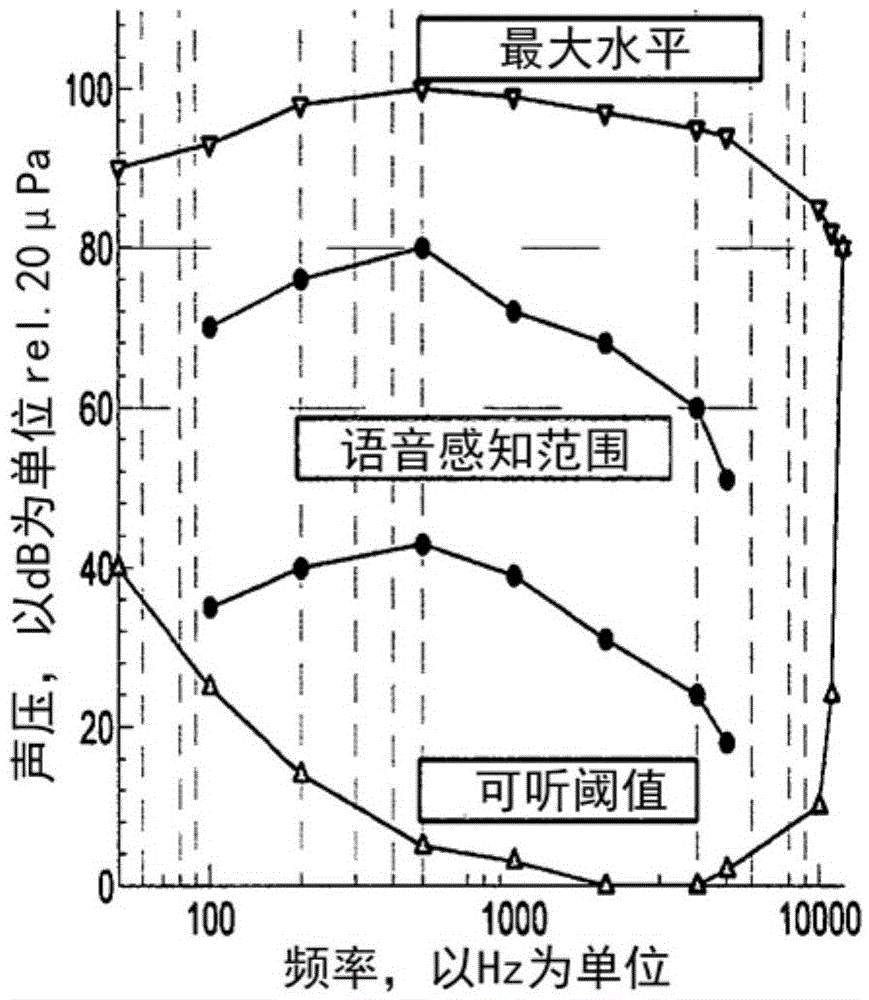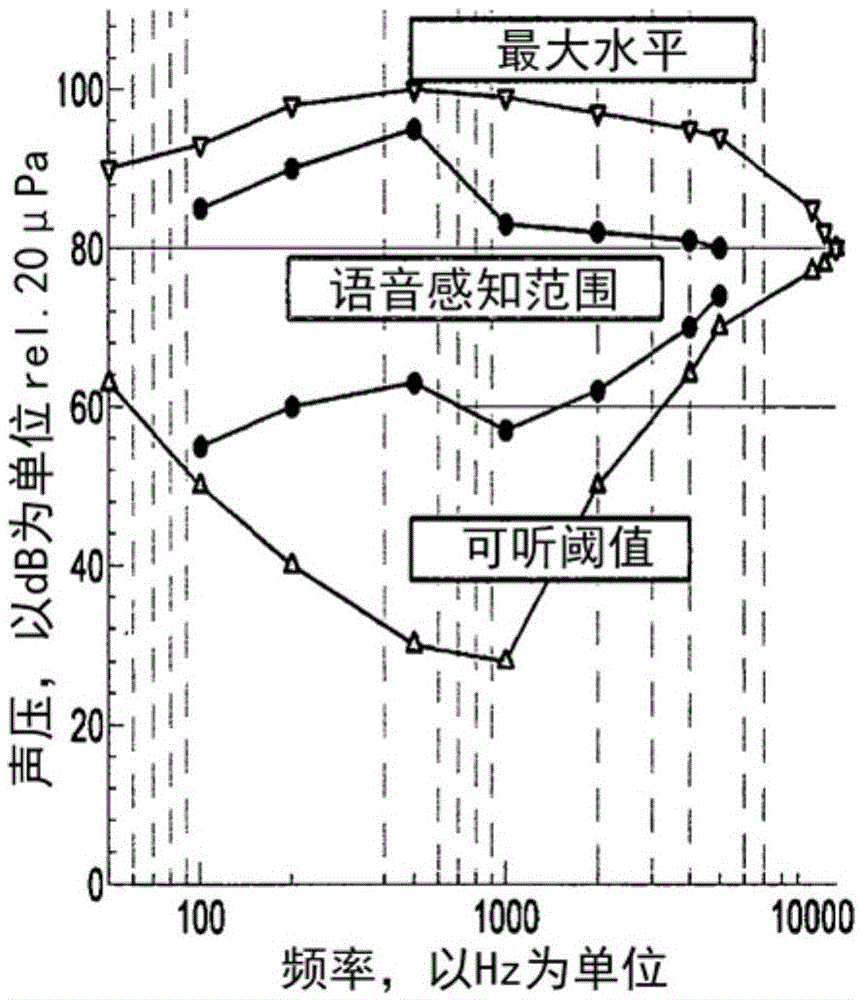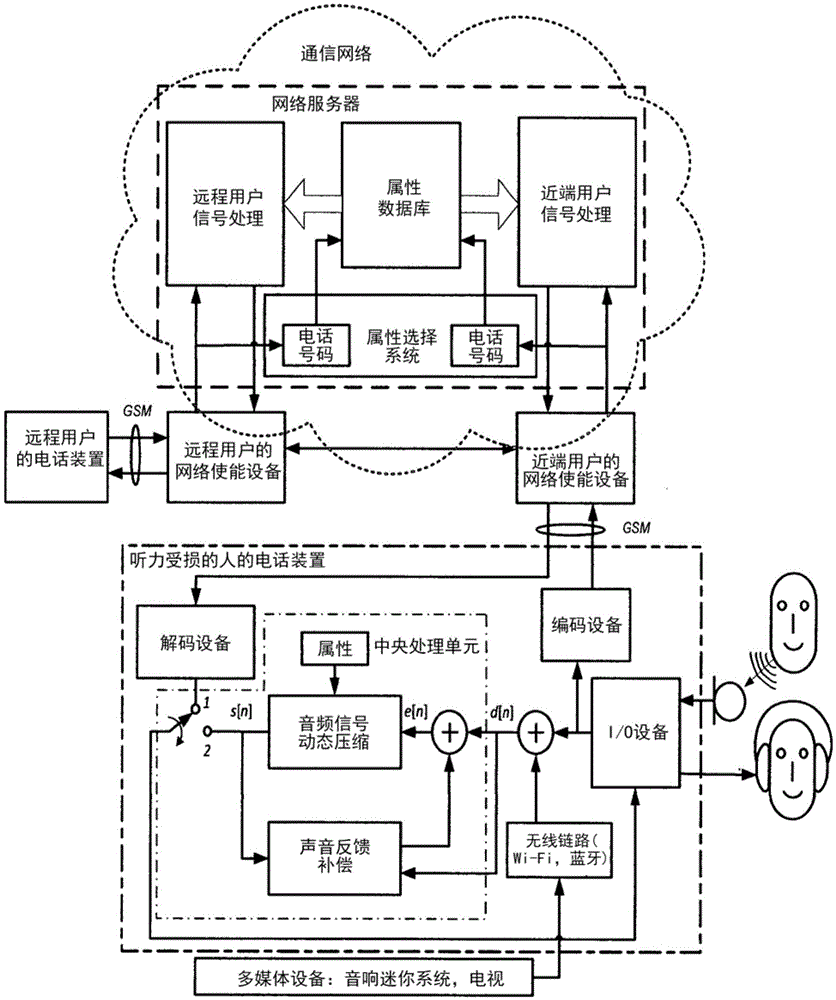Method for compensating for hearing loss in a telephone system and in a mobile telephone apparatus
A technology for mobile phones and hearing loss, which is applied in the fields of computer engineering and telecommunication systems, can solve problems such as the inability to obtain personalized signals, the inability to maintain conversations at the same time, and the inability of users to use various modes, so as to achieve extended functions, improve sound quality and voice The effect of intelligibility
- Summary
- Abstract
- Description
- Claims
- Application Information
AI Technical Summary
Problems solved by technology
Method used
Image
Examples
Embodiment Construction
[0060] figure 1 shows the range of signal perception for a person with normal hearing, and figure 2 displayed with figure 1 Same, but for people with sensorineural hearing loss. The goal of modern digital hearing aids is to convert the hearing-impaired person's response ( figure 1 ) into the response of a person with normal hearing ( figure 2). One of the main problems in the design of hearing aids is the limitation of the allowable delay introduced into the audio signal. If the delay is large (beyond 8 ms), then there will be spurious echoes that negatively affect perception. Modern hearing aids perform processing in sub-bands of signal frequencies, which requires analysis and synthesis filter banks, which will introduce additional group delay and will not be able to guarantee a delay of less than 6-8 milliseconds. Furthermore, the problems described in the background section also arise when using HA and PS separately.
[0061] The method claimed herein for compensat...
PUM
 Login to View More
Login to View More Abstract
Description
Claims
Application Information
 Login to View More
Login to View More - R&D
- Intellectual Property
- Life Sciences
- Materials
- Tech Scout
- Unparalleled Data Quality
- Higher Quality Content
- 60% Fewer Hallucinations
Browse by: Latest US Patents, China's latest patents, Technical Efficacy Thesaurus, Application Domain, Technology Topic, Popular Technical Reports.
© 2025 PatSnap. All rights reserved.Legal|Privacy policy|Modern Slavery Act Transparency Statement|Sitemap|About US| Contact US: help@patsnap.com



